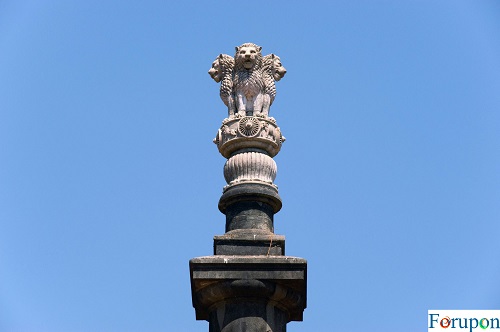Mauryan Empire
For upon |The Mauryan Empire was the first pan-Indian empire. It covered most of the Indian region and was founded around 321 B.C.E.
Pillars of Ashoka
The masterfully sculpted Ashoka pillars tower over the municipal garden in Panjim, Goa, India. These are one of the last remaining relics from the Mauryan Empire.
The Mauryan Empire, which formed around 321 B.C.E. and ended in 185 B.C.E., was the first pan-Indian empire, an empire that covered most of the Indian region. It spanned across central and northern India as well as over parts of modern-day Iran.
The Mauryan Empire’s first leader, Chandragupta Maurya, started consolidating land as Alexander the Great’s power began to wane. Alexander’s death in 323 B.C.E. left a large power vacuum, and Chandragupta took advantage, gathering an army and overthrowing the Nanda power in Magadha, in present-day eastern India, marking the start of the Mauryan Empire. After crowning himself king, Chandragupta took additional lands through force and by forming alliances.
Chandragupta’s chief minister Kautilya, sometimes called Chanakya, advised Chandragupta and contributed to the empire’s legacy. In addition to being a political strategist, Kautilya is also known for writing the Arthashastra, a treatise about leadership and government. The Arthashastra describes how a state should organize its economy and maintain power. Chandragupta’s government closely resembled the government described in the Arthashastra. One notable aspect of the Arthashastra was its focus on spies. Kautilya recommended the king have large networks of informants to work as a surveillance force for the ruler. The focus on deception reveals a pragmatic, and borderline cynical, view of human nature.
Bindusara, Chandragupta’s son, assumed the throne around 300 B.C.E. He kept the empire running smoothly while maintaining its lands. Bindusara’s son, Ashoka, was the third leader of the Mauryan Empire. Ashoka left his mark on history by erecting large stone pillars inscribed with edicts that he issued. After leading a bloody campaign against Kalinga (a region on the central-eastern coast of India), Ashoka reevaluated his commitment to expanding the empire and instead turned to Buddhism and its tenet of nonviolence. Many of his edicts encouraged people to give up violence and live in peace with each other—two important Buddhist principles.
After Ashoka’s death, his family continued to reign, but the empire began to break apart. The last of the Mauryas, Brihadratha, was assassinated by his commander-in-chief—a man named Pushyamrita who went on to found the Shunga Dynasty—in 185 B.C.E.

The masterfully sculpted Ashoka pillars tower over the municipal garden in Panjim, Goa, India. These are one of the last remaining relics from the Mauryan Empire.
Photograph by Dinodia Photos
The article was originally published here.


Comments are closed.